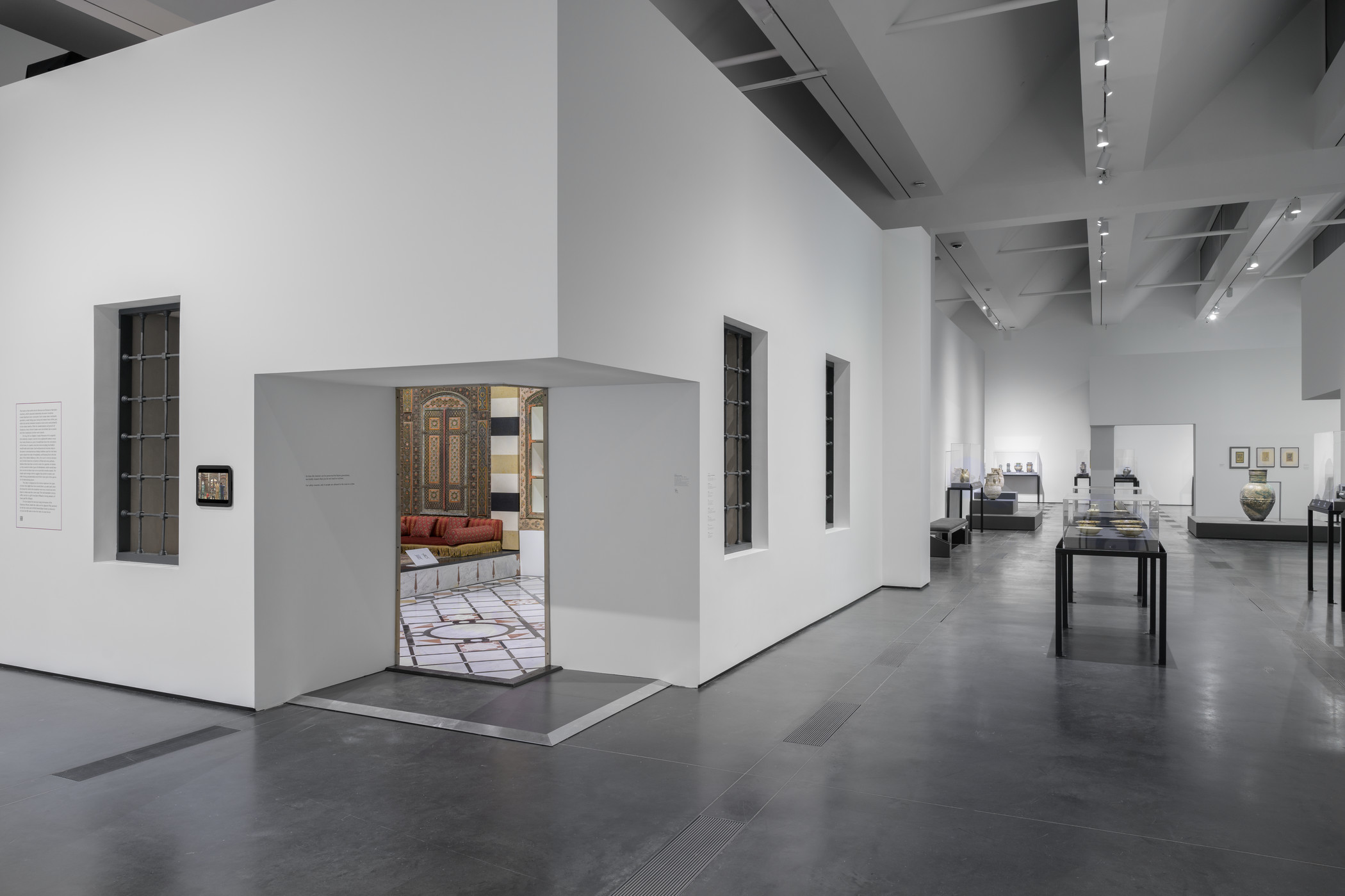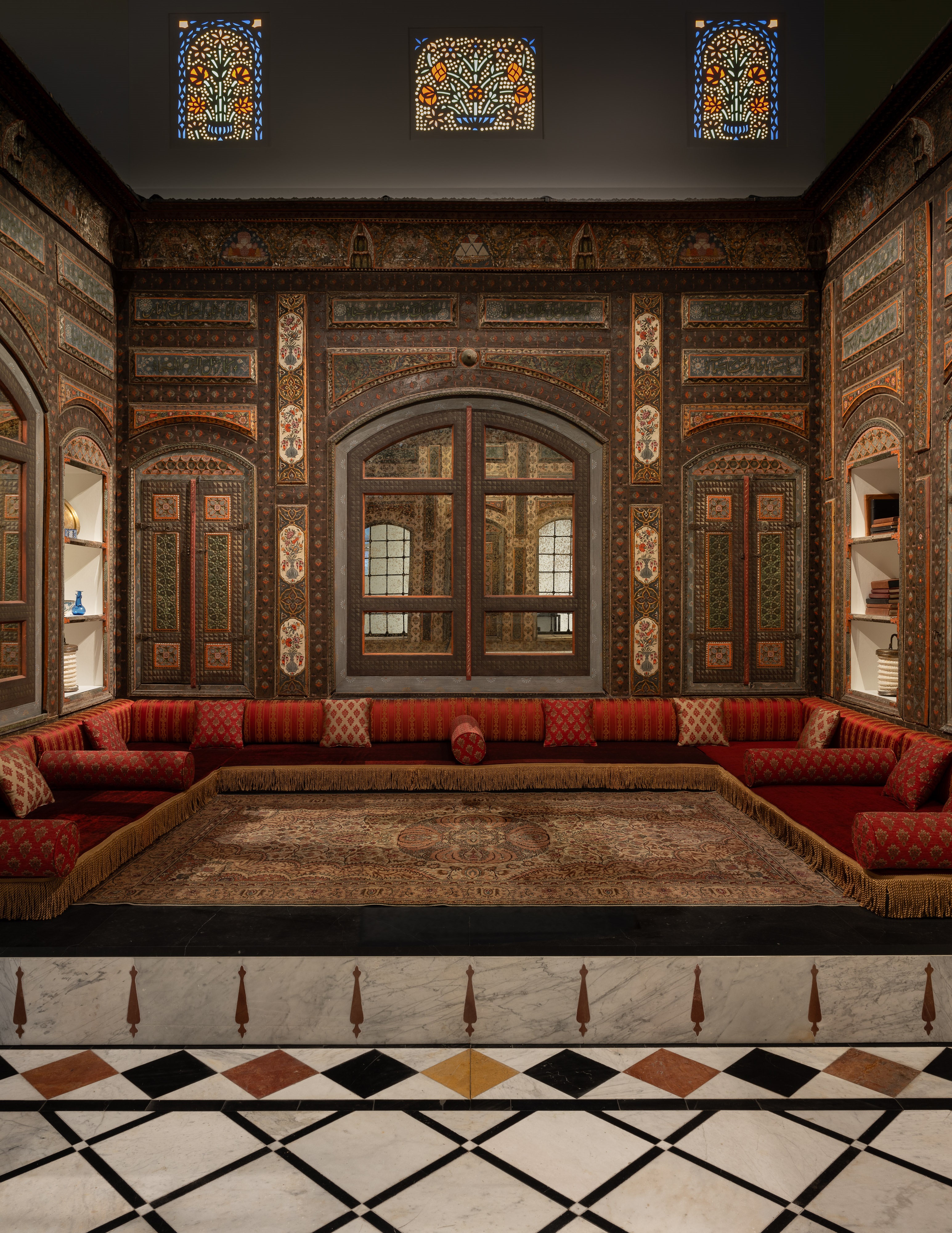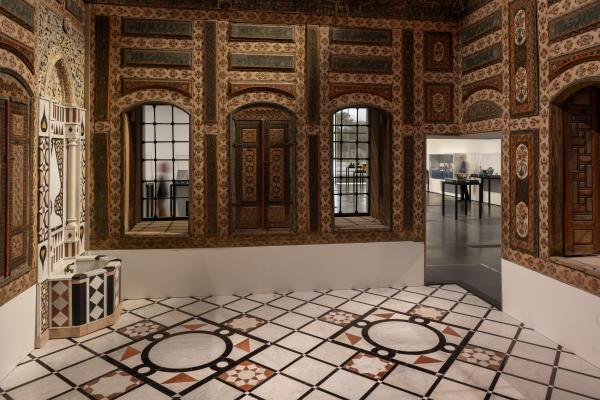Over the last dozen years, I have had occasion to report here on a remarkable acquisition—the Damascus Room—and its journey from a dismantled painted-wood interior, which arrived at LACMA in 2012 packed in 24 crates, to a conserved, reconstructed, and largely complete 18th-century reception room from Damascus, Syria. The room, which is dated 1766–67, was first revealed in an exhibition of highlights from LACMA’s Islamic art collection, at the King Abdulaziz Center for World Culture (Ithra) in Dhahran, Saudi Arabia, 2018–20; because of the limited ceiling space in the gallery there, we were unable to install the full height of the wood paneling.

As is characteristic of such Damascene interiors, it is comprised of colorful stone floor tiles; painted and carved wood walls; elaborate cupboard doors and storage niches; a high arch of plaster voussoirs decorated with stone paste inlays, which served to divide the room into upper and lower sections separated by a single, tall step; and an intricately inlaid stone wall fountain with a carved and painted stone hood. At present, it is on view at LACMA, as part of the exhibition Dining with the Sultan: The Fine Art of Feasting (through August 4). Such a well-preserved interior helps to document contemporaneous dining traditions and the role such spaces played not only in hospitality and feasting but in the display of the related tableware, hence its important place in the exhibition. Known as a qa‘a, it would have been the centerpiece of the home, its opulent materials reflecting the family’s wealth and social status. At LACMA, the greater ceiling height has allowed us to include all the wood paneling and more of the room’s decorative arch, as well as a partial reconstruction of its clerestory. Also, for the first time, we have opened the room’s three shuttered windows. These modifications as well as our ability to install the Damascene interior in multiple types of spaces are made possible by its unique custom-made armature of welded tubular aluminum frames for the walls, arch, and floor, in which the major components are assembled as a series of interconnecting units creating a self-supporting room that can be disassembled and reassembled.

Damascus in the 18th century was home to 80–90,000 inhabitants, making it one of the largest cities in the Ottoman Empire, though it functioned as a provincial capital. It was mainly a city of homes and homeowners whose domestic lives avoided the narrow, crowded streets by focusing inward instead, on light-filled courtyards planted with trees and scented with the ubiquitous jasmine. Once a prized space in a Damascene courtyard home, which was torn down in 1978,¹ our room likely served multiple purposes that may have changed over its long life but, first and foremost, it functioned as a place for receiving and entertaining guests. Entering the room from the adjacent courtyard, visitors would be invited to remove their shoes and step up to the carpet-covered upper section, to be seated on one of the low couches. While awaiting refreshments, their appetites would be whetted as they gazed up at the room’s cornices, which are decorated with platters of fruit, a watermelon, and what looks to be baklava.
Among the many acquisitions and diverse exhibitions that I have undertaken during my long tenure at LACMA, this is the one closest to my heart. It was therefore especially thrilling to finally see it installed at the museum and almost exactly as I had imagined. Rather than presenting it as a typical period room, which is generally viewed through a transparent barrier, replacing the fourth wall, and implying a frozen moment in time, our visitors can enter the room for a more immersive and intimate experience. Of equal concern to me, the room is unbound in time embedded as it is within the galleries and visible from multiple vantage points, while the vista from one of the room’s windows reveals contemporary Los Angeles, looking toward 6th Street with its palm trees and passing cars. This remarkable room embodies the profound connection between past and present, one which is at the heart of any encyclopedic art museum.
Dining with the Sultan is on view in the Resnick Pavilion through August 4, 2024.
1.The structural elements integral to the home, such as the dado in the lower section, and the clerestory, were not preserved. The wood-panel ceiling also did not survive; based on the condition of some of the cornices, which showed water damage, we suspect the ceiling was destroyed or badly damaged before the room was dismantled and removed from its original setting in 1978.



